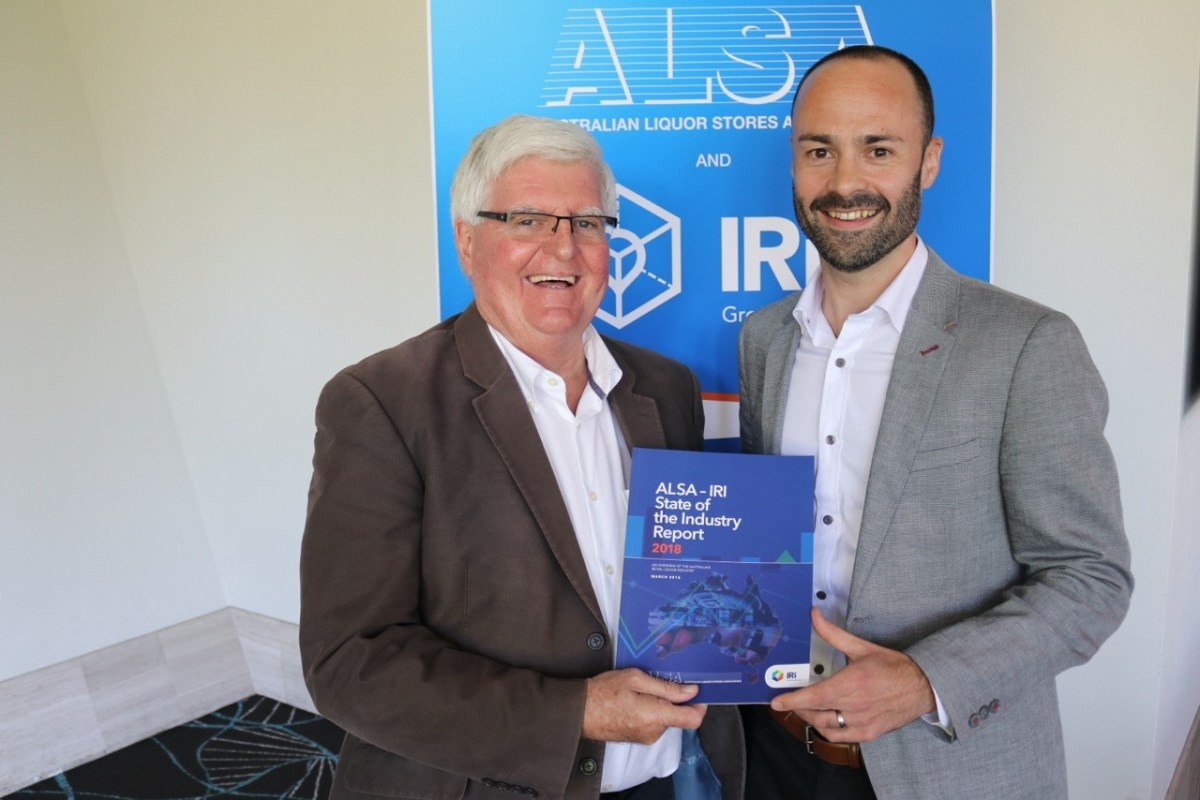By Andy Young
The Australian Liquor Stores Association (ALSA) and IRI State of the Industry Report details a retail packaged liquor industry that is in good health.
Senator Anne Ruston launched the report in Canberra on Tuesday night, along with the CEO of ALSA, Terry Mott, and IRI’s Channel Development Director, David Shukri (pictured above with the report).
The report specifies what has been happening in Australia’s off-premise industry over the last 12 months highlighting the value of the market, the jobs the industry supports, the number of packaged liquor licences and the taxes that the industry generates.
According to the report the annual retail liquor sales in Australia total $17.5bn, which generates indirect Commonwealth alcohol excise and WET taxes of $6.2bn, before GST revenue, company taxes and personal income taxes and before State and Territory Payroll Tax or Liquor Licence fees.
The retail liquor industry also provides flexible employment options for 48,000 people who are employed directly across Australia. Further the 6553 packaged liquor licences underpin an industry which generates employment for 166,000 Australians when the additional indirect jobs are factored in.
The overall $17.5bn retail liquor market grew by 3.4 per cent in 2017, versus 2.7 per cent growth in 2016 with Australian produced products at the core of this growth. The increased sales in 2017 amounted to an additional $570m in value, up from a $452m increase in 2016.
That growth was underpinned by increases in virtually all categories with beer, wine, spirits and RTDs all showing value growth. The only category to see a value decline was cider, which was down by 0.8 per cent, although it did show some positive signs with 0.4 volume growth.
The standout category was beer; the $6.5bn category saw value growth of 4.1 per cent and volume growth of 1.4 per cent, which was primarily influenced by the success seen by Great Northern.
The glass spirits category also volume and value growth with the $3.7bn category up by 3.7 per cent and 1.7 per cent respectively. That value increase amounted to an extra $119m in additional revenue for the category. That growth has been driven by on-going double-digit gains in malt Scotch, Irish whiskey and spiced rum. There was also solid single-digit growth in vodka and Canadian whiskey.
The RTD recovery has continued, with the report highlighting 2017 as a “standout year for the $2.4bn retail RTD market”. The dollar growth of 4.1 per cent in 2017 amounted to $94m in added value, the most significant expansion in the category in around a decade. The category has been driven by five consecutive quarters of quarter on quarter growth.
Overall the wine category slowed to levels below the total industry average with the $4.5bn retail wine market saw 2.4 per cent dollar growth which was worth $104m, down from $146m in 2016. The report details that 2017 was the year of rose, with the segment significantly over-indexing by generating $12m more than any other wine varietal.
The 0.8 per cent volume decline recorded by the cider category was worth $4m in lost value and it is the only category where value growth has consistently lagged behind volume growth in recent years. Domestic cider has been a bright spot for the category having recorded double-digit in both 2016 and 2017.
The report comes in a long and short version; the long report is available to ALSA members from tomorrow, while the shorter report is available to everyone and will also be on the ALSA website from tomorrow.

